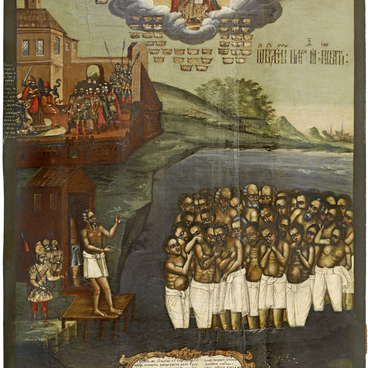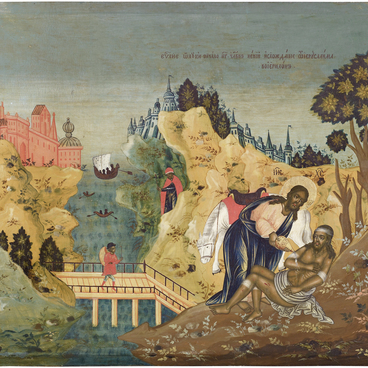The iconography of the Temptation of Christ in the Desert is based on a biblical narrative from the Gospel. According to the Gospel, after being baptized, Jesus fasted for 40 days and nights in the desert. During this time Satan came to Jesus and tried to tempt him three times, the temptations were hunger, vanity, and faith.
The icon from the Rybinsk Museum Reserve depicts a fragment of the temptation of hunger. The Devil tempts Jesus to make bread out of stones, If you are the Son of God, tell these stones to become bread. Jesus answered, Man shall not live on bread alone but on every word that comes from the mouth of God. This quotation from the Gospel is written in the upper part of the icon against the sky.
The icon from the Rybinsk Museum Reserve depicts a fragment of the temptation of hunger. The Devil tempts Jesus to make bread out of stones, If you are the Son of God, tell these stones to become bread. Jesus answered, Man shall not live on bread alone but on every word that comes from the mouth of God. This quotation from the Gospel is written in the upper part of the icon against the sky.

